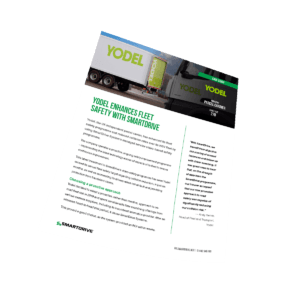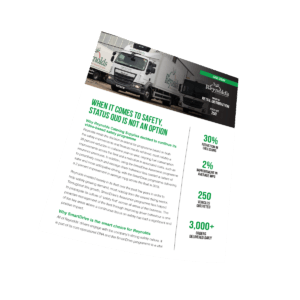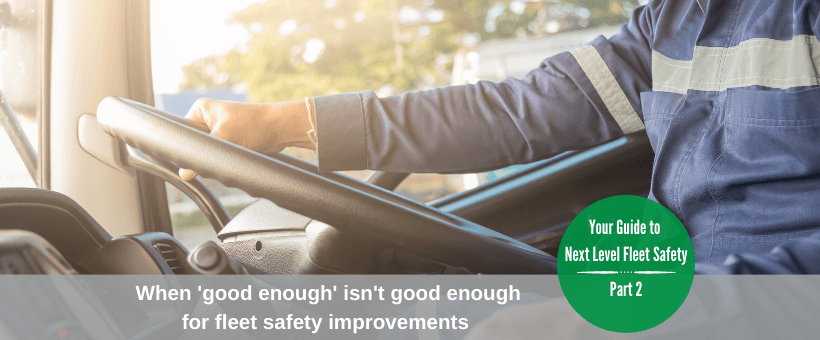
The SmartDrive Guide to Next Level Fleet Safety Part 2
When it comes to fleet safety, technology alone isn’t enough. You need the intelligence behind it.
The fleet industry has plenty of increasingly sophisticated technology to capture data about on-road incidents – including converged solutions, such as cameras and telematics combined in a single platform. Yet the truth remains that the best fleets are only seeing a proportion of the possible fleet safety benefits – and the fleets who need help the most will often see no benefit at all. Why?
Because the important thing about data isn’t capture – it’s analysis and actionable insights. The most important thing about an on-road incident for ongoing fleet safety improvements isn’t what caused that incident – but how it informs your understanding of risk and enables safety improvements.
Data Analysis
At SmartDrive Systems we talk to a lot of fleets who have successfully implemented telematics – for a given value of success. They have often managed to improve mpg and driven down the incidents of harsh braking and rapid acceleration, but they have not managed to drive down their road risk overall.
The reason for this is that their data analysis is lacking. It isn’t uniform, in that most captured incidents will not be viewed, analysed or used as the basis for coaching.
After all, what fleet manager has the time?
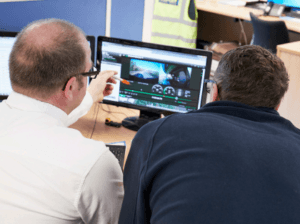 SmartDrive’s risk analysis team does have the time and the experience to do it for you – and this is exactly why we analyse all captured incidents and provide specific coaching insights for all our customers, in line with each individual fleet’s operating processes.
SmartDrive’s risk analysis team does have the time and the experience to do it for you – and this is exactly why we analyse all captured incidents and provide specific coaching insights for all our customers, in line with each individual fleet’s operating processes.
The other problem for fleets using telematics and cameras without an expert review service is that they lack qualified objective observers who can review footage with a comprehensive understanding of road risk. Fleet managers do not know how one risky behaviour relates to others, and to collision risk overall.
Fleet managers who review data will fall into one of two categories:
- They review incidents ‘by the numbers’ – e.g. if the near miss was too near, if the braking was too harsh or too frequent. This is an objective approach in that it doesn’t differentiate by driver. It only captures the low hanging fruit, but misses a great deal.
- The other approach is to subjectively decide which incidents require driver debriefing or coaching. Typically this will mean that drivers are either caught too late and are debriefed post-collision rather than preventatively; or that the manager/trainer identifies some candidates for close supervision while ignoring others based on subjective criteria, such as how well they know the driver, or whether they have a taxing route.
These fleet managers are not choosing to do an inadequate job – they are dedicated professionals. However, they do have to prioritise their time, and reviewing individual data is extremely time-consuming.
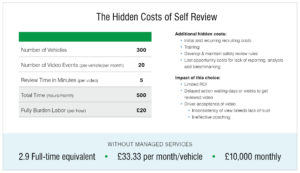
Do you know the potential of your data?
Fleets are often tempted to choose a converged technology solution from their existing telematics provider, which essentially stitches cameras on to their existing dashboard of data. Without the time and ability to risk-assess this data, fleets will never realise the potential of the data they have.
“Without SmartDrive it would have taken huge internal resources to manage this amount of data effectively and, in practical terms, would have been impossible to implement and objectively use as part of a proactive driver safety improvement programme.”
Andy Yemm, Head of Fleet and Transport, Yodel.
SmartDrive Systems has now analysed, risk-assessed and provided insights to fleets on more than 300 million pieces of on-road footage, captured over more than 24 billion driving miles. This has given us an encyclopedic and statistical understanding of the predictors of collisions, the co-existence of risk factors, and the unprecedented knowledge of how fleets can most effectively identify and eliminate road risk, protecting their drivers and ultimately, saving lives.
Those 300 million pieces of footage have cut insurance costs, lowered uninsured losses, saved wear and tear on vehicles and reduced fuel consumption through safer and more anticipative driving. Most importantly, however, they have helped fleets reduce collisions by more than 50%.
It’s not technology that saves lives. It’s the intelligence it provides and the programmatic actions it enables.
Find out how other fleet managers are saving money and time:
|
|
- Posted by Eduardo Valencia
- On March 22, 2021


